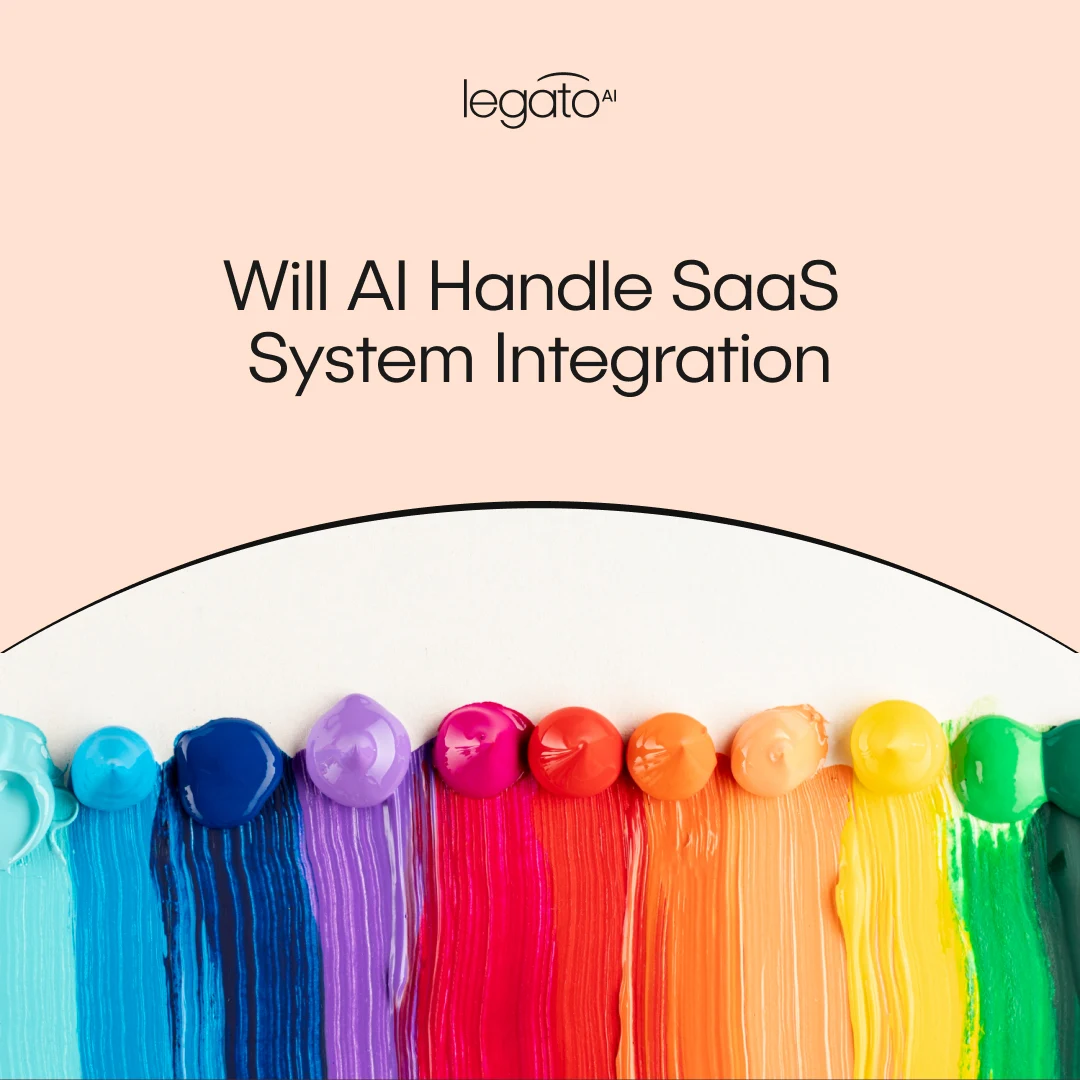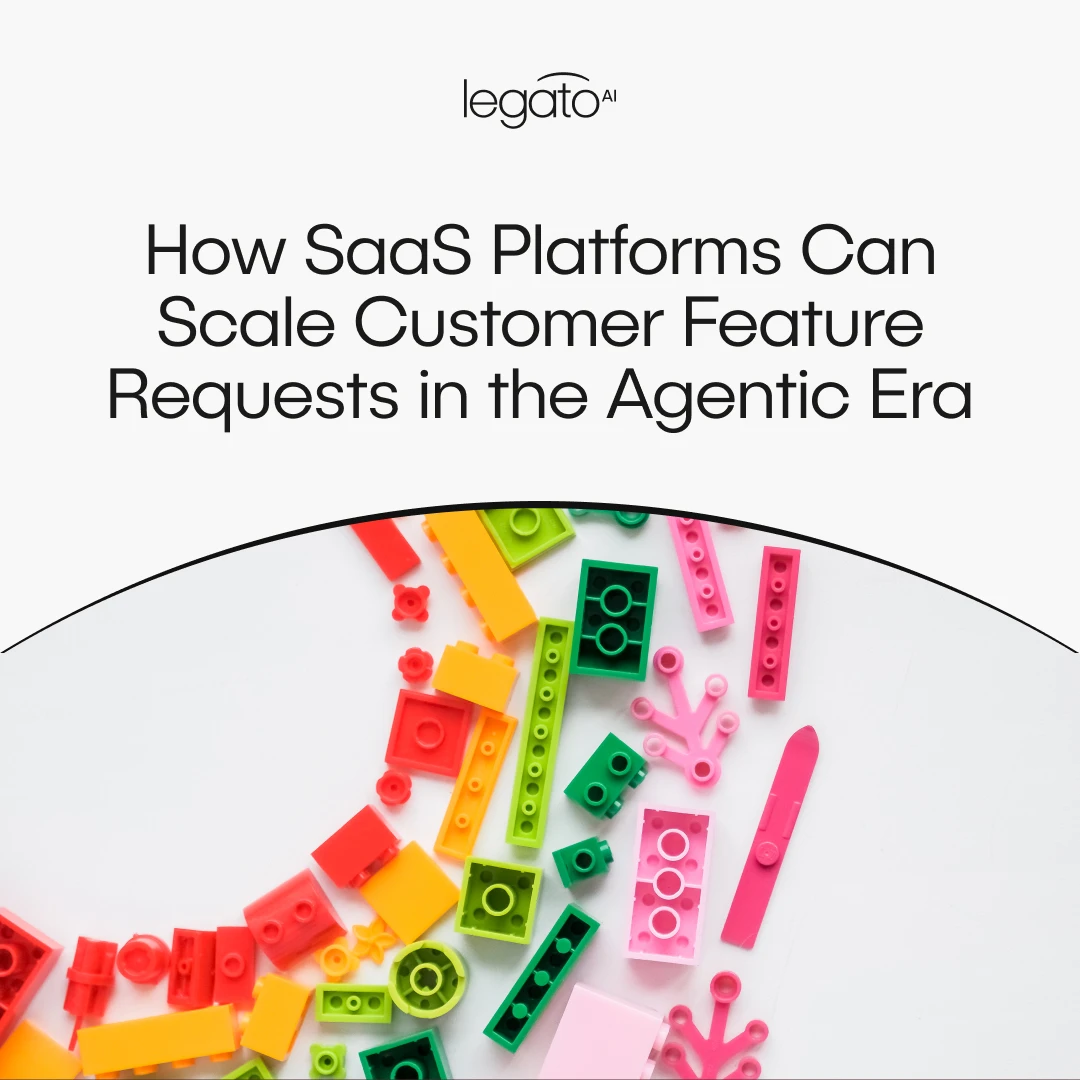The Platform Opportunity in No-Code Agent Builders

The Rise of No Code AI Agent Builders
By 2028, 31% of enterprise software applications are expected to include agentic AI, a dramatic leap from less than one percent in 2024. In the same timeframe, one out of every three interactions with generative AI is projected to invoke an autonomous agent to complete a task. This shift is not abstract or futuristic—it is a trajectory already visible in the growing adoption of embedded AI assistants and the first wave of no-code agent builders.
For B2B platform leaders, this trend raises an urgent question: how should agent builders be positioned inside your product? The opportunity for vendors lies in embedding them directly. Done right, no code AI agent builder capabilities can transform a product from a piece of software into an extensible ecosystem where customers design, deploy, and continuously expand their own value. On the other hand, platforms that fail to offer agentic builders risk losing momentum to competitors—or worse, seeing users create their agents outside the platform, eroding long-term stickiness.
Why No-Code Agent Builders Matter for SaaS Platforms
Agent builders lower the barrier to creating intelligent workflows. Instead of depending on scarce developer talent, business users can design automations and agents through visual interfaces or conversational prompts. The promise is simple: faster innovation, broader adoption, and a new level of customer empowerment.
For platforms, the value goes deeper. First, adoption becomes more entrenched. If a customer builds dozens of agents on top of your product, those agents represent workflows and processes that are difficult to migrate elsewhere. Second, monetization expands. A builder can introduce usage-based fees, premium tiers, or even revenue-sharing from marketplaces where customer-created agents are published. Third, ecosystems grow. Agents created by one user can be shared, reused, and extended by others, multiplying the stickiness of your platform.
This is why embedding an AI agent builder no code capability is not just a feature request. It is a strategic lever that affects retention, revenue, and long-term differentiation.
The Vendor Risks in Embedding No-Code Agent Builders
Embedding an AI agent builder no code capability inside a platform comes with its own set of risks that vendors must carefully manage.
Security exposure: Allowing customers to create and deploy agents expands the attack surface of your platform. Each new agent is a potential point of vulnerability if not properly safeguarded. Vendors must embed strong authentication, throttling, and monitoring so extensibility doesn’t compromise trust.
Agent sprawl: The ease of building can quickly lead to an uncontrolled proliferation of agents. Without governance, vendors risk “agent anarchy”: thousands of poorly designed automations colliding or looping. Preventing this requires embedding approval workflows, observability, and limits that scale with customer usage.
Data readiness: Your AI agent is only as good as the data it relies on. If customers bring fragmented, incomplete, or outdated data into your platform, even the most sophisticated builder will produce weak results. Vendors must anticipate this reality and provide tools for diagnostics, profiling, and guardrails that help customers get their data into a usable state before deploying agents.
Data ownership conflict: Vendors want visibility into how their platform is being used, which agents are effective, and what customer needs are emerging. But usage data ultimately belongs to the customer. Mishandling this tension erodes trust.
Monetization pitfalls. Pricing models for agent builders are not yet standardized. Charge too much and adoption stalls; charge too little and extensibility becomes a cost center. Vendors must design models tied to value, whether through usage, premium tiers, or marketplace revenue, and communicate them transparently.
Skills and adoption gap. Even with no-code, not all customers will know how to design effective agents. If building feels too technical, adoption lags and ROI drops. Vendors face the risk of investing in extensibility that only a small subset of “citizen developers” can use. Simplification and guidance are essential.
Lessons From Agentforce
As one of the first large-scale agent builders in B2B, Salesforce’s Agentforce provides a useful lens on the realities of launching such a capability. Its early adoption highlights both the potential of embedded builders and the growth pains vendors face when risks are not fully addressed. The same challenges we outlined — from security to data readiness to pricing — are clearly visible in Salesforce’s rollout:
Despite the excitement around agent builders, Agentforce adoption has been slower than expected. The same vendor risks we outlined are visible in Salesforce’s rollout:
- Trust: Demos created strong expectations, but customers reported that production agents often required weeks of setup and testing before they could be trusted.
- Data quality and complexity: Many Salesforce orgs carry years of automation and metadata debt. Agents built on top of messy data produced inconsistent results, underscoring how fragile adoption can be when vendors don’t address data readiness.
- Pricing and transparency: The initial per-conversation pricing model created confusion and hesitation. Customers weren’t sure what counted as a “conversation,” and fears of double-charging slowed usage. Only after switching to action-based Flex Credits did Salesforce begin to regain clarity.
- Security: A recent issue with the Web-to-Lead form exposed how Agentforce could be exploited to bypass validation and inject data directly into Salesforce records. Incidents like this highlight the importance of building agent builders with security by design, not as an afterthought.
The Real Challenge: Balancing Openness and Control
Embedding an AI agent builder no code capability is not about handing customers unchecked freedom. Platforms must carefully balance openness with control. On one side, customers want the ability to experiment, customize, and innovate at speed. On the other hand, enterprises require safeguards: ensuring that agents are reliable, compliant, and aligned with corporate policies.
This balance is achieved by abstracting complexity. A well-designed builder allows customers to describe what they want in plain terms, while the platform handles the underlying logic, security, and governance. Guardrails need to be built in by default, not added later as an afterthought. When this is done right, extensibility does not create risk; it creates a managed environment where innovation flourishes under oversight.
Redefining the Builder: Beyond Citizen Developers
There’s a misconception that users fall into two groups: business users who consume prebuilt agents, and “citizen developers” who use builders to create new ones. This distinction is increasingly artificial. In practice, all types of users need the ability to build, not just a narrow class of technically curious employees.
A no code AI agent builder should therefore not look like a stripped-down development IDE. It should feel more like a conversation. The user describes a process, goal, or need in plain language, and behind the scenes a multi-agent system orchestrates the rest. These background agents translate intent into structured workflows, generate the required logic, and adapt outputs to the user’s role and context.
This model redefines extensibility. It is no longer about “self-service for a few.” It becomes co-creation for everyone. A sales manager should be able to describe a lead routing rule, just as an HR leader should be able to describe an onboarding workflow, and both should see working agents emerge in minutes. By embedding this experience, platforms make extensibility not just a feature for power users, but a capability accessible to the entire customer base.
The Platform Play: No Code AI Agent Builders
The next wave of platform competition will not be won on features alone. It will be won on extensibility—how easily and safely customers can shape a product to their own needs. No code AI agent builders are key to delivering that promise.
Designing a builder comes with trade-offs. Left unchecked, extensibility can create sprawl, complexity, or even new security exposures. But with the right safeguards, those same dynamics become the foundation for stronger adoption, durable revenue streams, and long-term trust.
The future belongs to platforms that deliver builders simple enough for any user to describe what they need in plain language, and robust enough to orchestrate sophisticated outcomes behind the scenes. That requires embedding governance, security, and observability at the core while allowing flexibility at the edges.
In a market where agentic AI is set to become widespread within just a few years, platforms that embrace this model will transform from tools into ecosystems. They will not only grow adoption but redefine their categories, positioning themselves as the environments where every customer is empowered to build.
Frequently Asked Questions
1. What is a no code AI agent builder?
A no code AI agent builder is a platform feature that allows users to design, deploy, and manage AI-powered agents without writing code. Instead of relying on developers, users can describe workflows, goals, or rules in plain language, and the system generates the logic behind the scenes.
2. How can B2B platforms benefit from embedding an AI agent builder no code capability?
Embedding an AI agent builder no code capability helps platforms increase adoption and stickiness, unlock new monetization streams, and turn products into ecosystems. Customers who build agents inside the platform create workflows that are harder to replace, deepening retention and long-term revenue.
3. What are the risks of no-code agent builders for vendors?
Vendors face risks such as security exposure, uncontrolled agent sprawl, unclear pricing models, and adoption barriers if the builder feels too technical. Without strong governance and safeguards, a decision to build no code AI agents can lead to complexity instead of value. Platforms must design builders with built-in guardrails, transparency, and simplified user experiences.
4. Who should use a no code AI agent builder?
All types of users should be able to use these builders, not just technical “citizen developers.” A well-designed builder feels more like a conversation interface: sales leaders, HR managers, or operations teams can describe processes in plain language, and the system builds the agents for them.
5. What happens if a platform doesn’t offer a no code AI agent builder?
Platforms that fail to provide an extensible builder risk losing momentum to competitors. Even worse, users may start building their own agents outside the platform, reducing stickiness and weakening the platform’s role in their workflows.


.webp)
